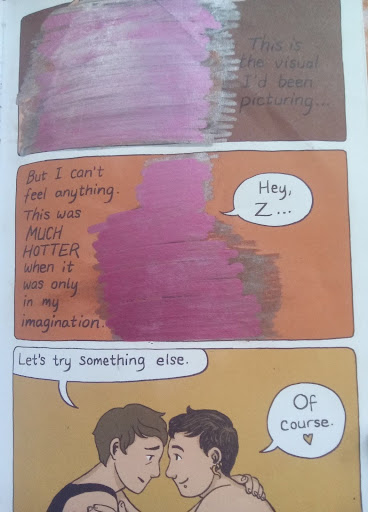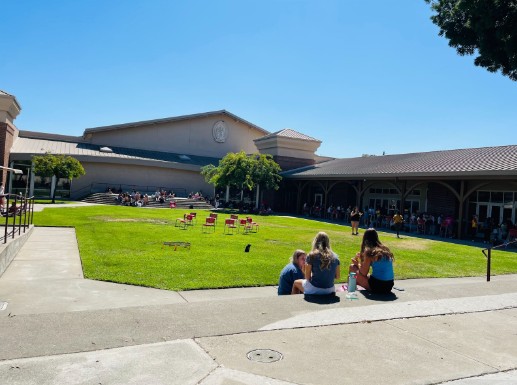‘Gender Queer’ by Maia Kobabe sits in the Umoja Academy library, with panels painted over by librarian Cristina Jordan.
The memoir “Gender Queer,” is on the shelf in the Umoja International Academy Library – but some of the comic’s panels have have been painted over by librarian Cristina Jordan.
Catering to students ages 12 through 18, the Umoja Library houses 5,000 books.
Two panels of the library’s copy of “Gender Queer” have been covered in multi-colored media to prevent students from seeing some of the book’s imagery. Those panels feature depictions of sexual intercourse and “sexting” between two consenting queer characters in the book.
Jordan said that the censorship was made in an effort to prevent the book from being misunderstood.
“Because it’s a graphic novel, the visual of it is so much,” Jordan said. “It’s easier (for critics) … to try to demonize it.”
One teacher said she understands the perspective of protecting young minds – but she also keeps an uncensored copy of the book in her own class library.
“Books are representations of ideas,” said Shannon Barnes, who teaches high school English and theory of knowledge. “And when a book gets banned, people aren’t saying, ‘I want to ban this book.’ They’re saying, ‘I want to ban what this book represents.’ What these books represent is people.”
Barnes said a compromise over parent and student rights might come in the form of keeping a “back shelf” which houses some controversial books like “Gender Queer.”
So was it hypocritical for the Umoja library to celebrate Banned Books Week while censoring the imagery associated with a graphic novel?
“You’re left with one person’s interpretation of what is objectionable about that literature,” Barnes said. “I don’t want to say it’s not hypocritical, but I don’t want to say it’s hypocritical – because I think there’s space for both to coexist.”
Some students criticized the censorship.
“I feel like it’s sort of weird and homophobic,” seventh-grader Jerimi Vanbooven said, “because there are probably way more inappropriate books than that specific book right there.”
“It can give (students) the view that their body is not OK,” sophomore Luca Labelli said. “Why would it be harmful? (The censorship of the imagery) makes no sense. It’s literally just one part of the … book.”
Jordan, the Umoja librarian, said the censorship was not the result of family complaints. She argued the significance of “Gender Queer” is more than the censored panels.
“I think that’s just what feels right,” Jordan said. “It feels OK to me to do . . . I don’t want it to be challenged.”








